
The Micro Bass Book
Designer:
HILO
Project Category:
Subwoofers
Project Level:
Advanced
Project Time:
8-20 Hours
Project Cost:
Under $100
Project Description:
This micro-sized (4.5Litter) Subwoofer was designed for my “Micro Vertical Twin Satellite with T-Shaped Vent” (Previously Posted2018). Finally I could complete my micro Desktop 2.1 channel Speaker System (Previously I was using with My Small Cube 10” Band Pass LS10-44 Subwoofer, as I posted 2017). That was not small enough to set up them all on my desktop space. In contrast, this very small “B5” sized subwoofer can be placed at the middle of the desktop bookshelf. Complete desktop system was able to retrieve from 35Hz to 180Hz with 4 Litter Rear Chamber and 0.5 Litter Front Chamber. Isobaric configuration(Fig3) enables to cut the half of Vas. “T” shaped vent eliminates the vent resonated sounds.(Fig8) My technical challenge micro Desktop 2.1ch Speaker System project was completed with this File Box sized subwoofer.
Design Goals:
It was very difficult to design small sized subwoofer with deep low ends. I used two Dayton Audio ND105-4 units with isobaric configuration. (Fig3) This method enables to reduce the enclosure volume by half. A booklet sized subwoofer enclosure is the perfect choice for the desktop speaker system. So I tried to design an enclosure as small as possible. WinISD simulated result shows it’s possible like Fig-2.
Driver Selection:
At first, I wanted to build system as small as possible. So I choose Dayton Audio ND105-4, as following reasons…
– Aluminum Cone Material. Strong enough to push the compressed air.
– High Excursion Capability (20mm peak-to-peak)
– Small Vas
– Lower fs
– Robust and Higher Power handling
– Reasonable Price
Enclosure Design:
I used “WinISD“ speaker design simulation for this project. I tried Closed, Vented, 4th Order BandPass and 6th Order BandPass design. Comparing these simulated results, 6th order BandPass Design was the best choice for this project. Biggest reason of designing dimension is “B5” (7.17 inch x 10.12 inch) size books and magazines are very popular in Japan. Additional reason is a small size fits for all bookshelf spaces. An enclosure width was defined by the simulation result, which can cover from 40Hz or less. Front vent covers higher range, and Rear vent covers lower ranege as shown in the Fig8. A quarter wavelength resonant trap was embedded into each vent. This “T-Shaped Vent” design method is very simple, just attach a half length single closed pipe at the middle of the vent. A little bit wadding (stuffing) single closed pipe will decrease the ringing sound and broads the stop-band.(Fig8)
Enclosure Assembly:
Mainly used 12mm laminated veneer boards and 9mm MDF for the vents. After complete assembling, Surface finish material is urethane varnish for under coat (fig7 Bottom-Right). Then I cover them with wooden printed PVC sheet. Inside the enclose was reinforced by 2ply glass-cross and painted with polyester which called as FRP. (Fig7 Top-Left)
Crossover Design:
Upper limit of frequency response is around 180Hz. You don’t need so much sharp slope filter, because this system has natural Bandpass characteristic. (Fig11) I’m using active crossover dividing network and 3-channel amplifier to drive my 2.1ch System. Independent two pairs of speaker terminals are mounted for the capability of series/parallel connection.
Tips & Tricks:
– Isobaric Woofer Configuration
– T-Shaped Vent to eliminate the Pipe-Organ Resonances.
– Printed PVC sheet for easy touch-up & finishing.
Conclusion:
This micro sized subwoofer can cover from 38Hz to 180Hz transpearent clean deep bass sound. As a result of this, Now I’m enjoying various kind of music with this compact sized 2.1 channel audio system. Frequency response is fairly wide, but the sensitivity is not so high, so I recommend using with dedicated powerful subwoofer amplifier from the point of view sound balance.
About the Designer:
I have been interested in DIY Car and Home Audio over 20 years. My previous hobby project activities are stated in my web page. You can search and visit my personal web page, which named “CyberPit HILO”. (Sorry, most of my pages are in Japanese)
Project Parts List:
|
Part # |
Description |
Qty |
|
290-212 |
Dayton Audio ND105-4 4″ Aluminum Cone Midbass Neo Driver 4 Ohm |
1 |
|
260-301 |
Parts Express Banana 5-Way Speaker Wire Binding Post Terminal |
1 |


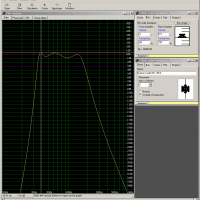
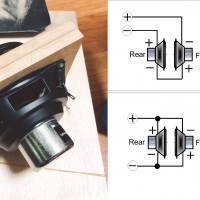
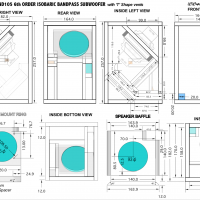
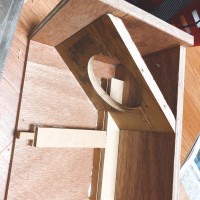
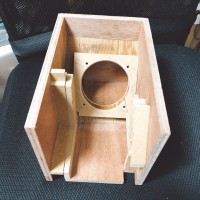
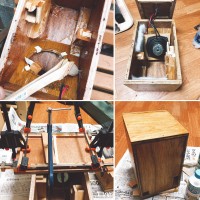
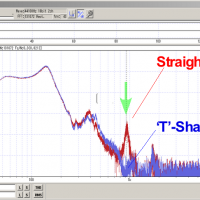
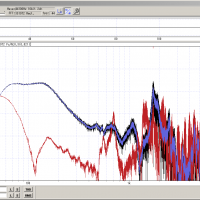
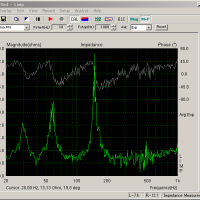
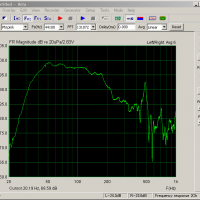
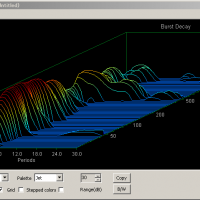
Wow, that is an incredible design. So many people want smaller systems and that sub definitely fits the mold. Thank you for posting it with such good data and pictures.
Complex geometry but very intriguing! I’m going to try and use your design for my own mini sub. Thanks for being so creative and thorough.
Thanks for posting this. How do these sound? From my limited experience 6th order bandpass can smear the bass notes. Did you also look at the Tang Band W4-2089? It models well in a 6th order.